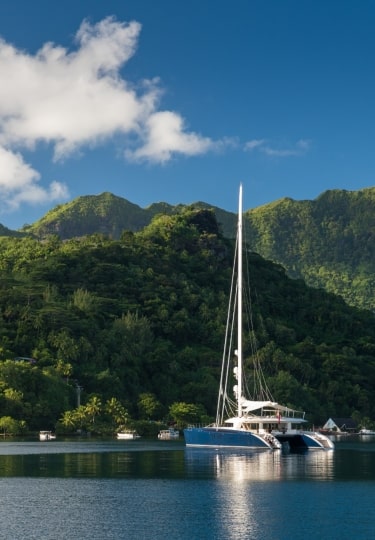The best time to visit French Polynesia is the dry season, between April and October. This is a time of lower humidity and clear skies.
The climate of French Polynesia is tropical, influenced by the southeast trade winds. The islands in the north, closer to the Equator, are slightly warmer than those to the south. Individual islands might have their own microclimates, too; mountainous Tahiti, for example, is drier on the west side than the east, as the west coast is more protected from the trade winds.
Whichever time of year you visit, you will encounter balmy temperatures and blissfully warm seas, perfect for swimming and snorkeling. Temperatures are fairly consistent with only a few degrees of variation. The Society Islands, for example, which include Tahiti, Moorea, and Raiatea, range from 77.6°F (25.4°C) in August, the coolest month, to 82.6°F (28.1°C) in March, the hottest. The only dramatic climate variation is in rainfall and humidity.
Visiting French Polynesia By Season
Summer
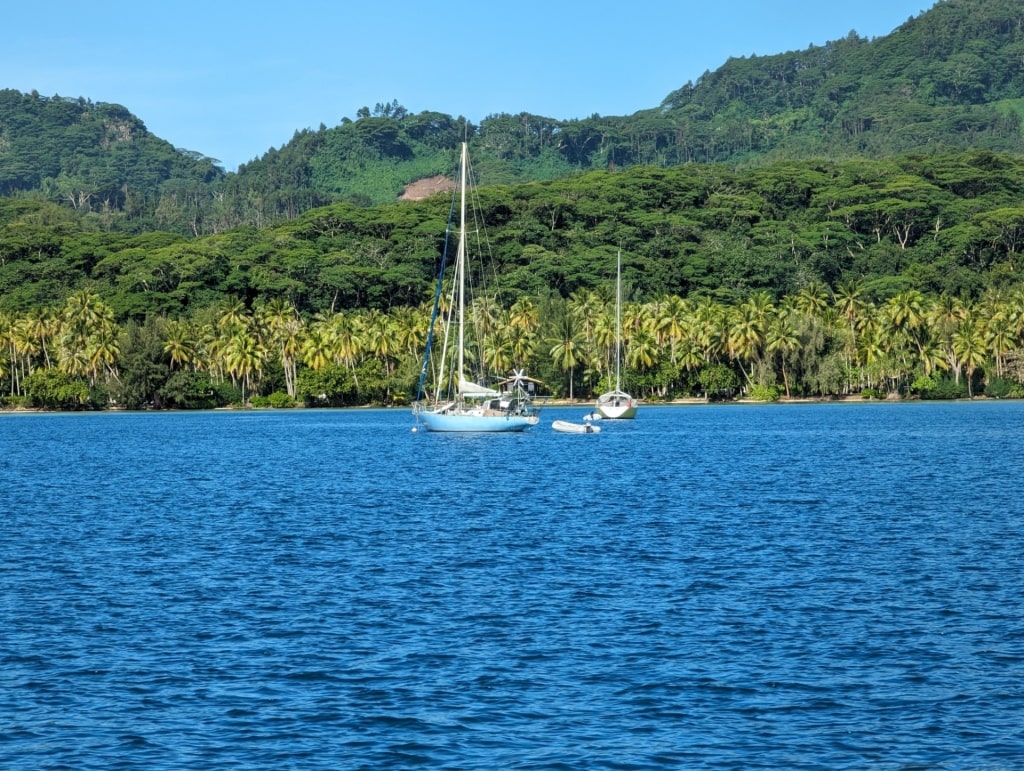
Raiatea
June, July, and August fall in the heart of the dry season, which is the best time to go to French Polynesia. Humidity is more bearable, and you can expect average highs in Tahiti in July of 79.7°F (26.5°C).
Summer is a wonderful time for snorkeling and watersports in the lagoons that encircle islands like Moorea and Raiatea, both part of the Society Islands group, which also includes Tahiti.
Fall
The weather begins to change as fall progresses. September and October, shoulder season months in the Society Islands, are still an excellent time to visit with slightly higher humidity than the preceding months but long, sunny days. September enjoys an average of eight hours of sunshine a day in Moorea and Raiatea.
Fall is a wonderful time to spot humpback whales, which migrate through the islands of the South Pacific en route to their feeding grounds in Antarctica.
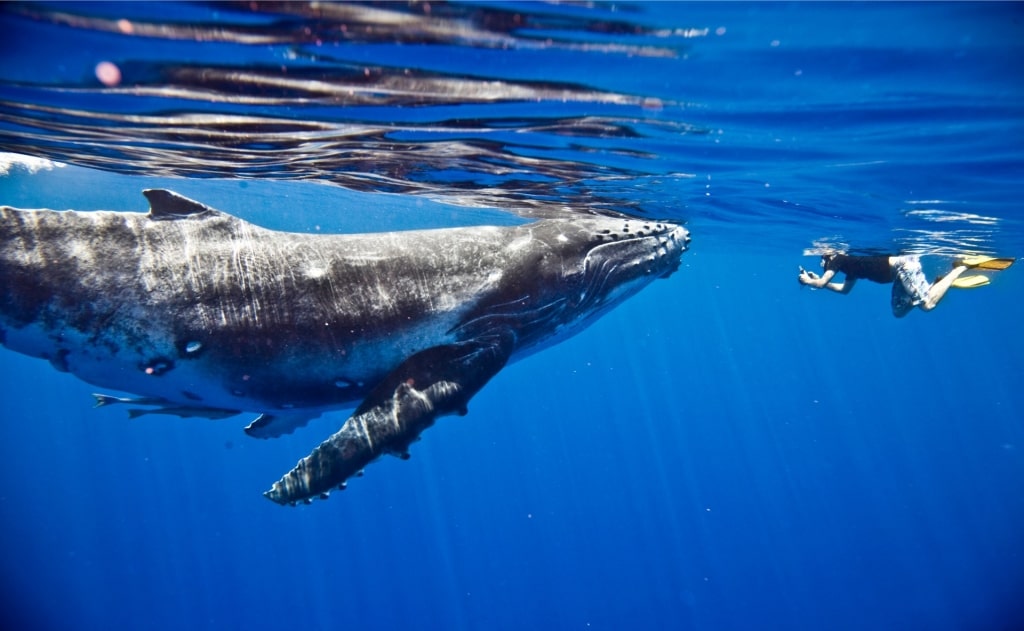
Humpback whale in Moorea
The northern reaches of the archipelago receive even more sunshine.
By November, the rainy season has set in. The beautiful island of Tahiti and its neighbor Moorea can expect an average rainfall of 4.5 inches (115mm) in November.
Winter
In the Society Islands, December, January, and February are the hottest and wettest time of the year, with frequent strong downpours and the occasional tropical cyclone. December and January see an impressive 10 inches (255mm) and 10.4 inches (265mm) of rain respectively in the Society Islands. The Marquesas receive less rain – around 5.7 inches (145mm) in January – but are still intensely humid.
The humidity is tempered by the cooling trade winds, though, and as this is low season, the islands are quiet. Landscapes are lush and green thanks to the rain, and the fruit harvest adds vibrant color to local markets.
Spring

Papeete, Tahiti
Spring is a time of transition in French Polynesia. March is still very much the hot, rainy season, with temperatures averaging 82.6°F (28.1°C) in Tahiti. By May, this has dropped to 80.6°F (27°C) as high season, or “winter”, begins.
When Is Rainy Season?
The rainy season in French Polynesia extends from November to April, although some parts of the archipelago, namely the far south, are much wetter than the islands nearer the Equator. Rainy season is a time of intense humidity, frequent downpours, and occasional cyclones.
Throughout the archipelago, the far south excepted, there is still plenty of sunshine and the islands take on a lush beauty, with waterfalls flowing fully. Visitors who are at home in a humid climate often find this a beautiful time to visit.
When Is High Season?
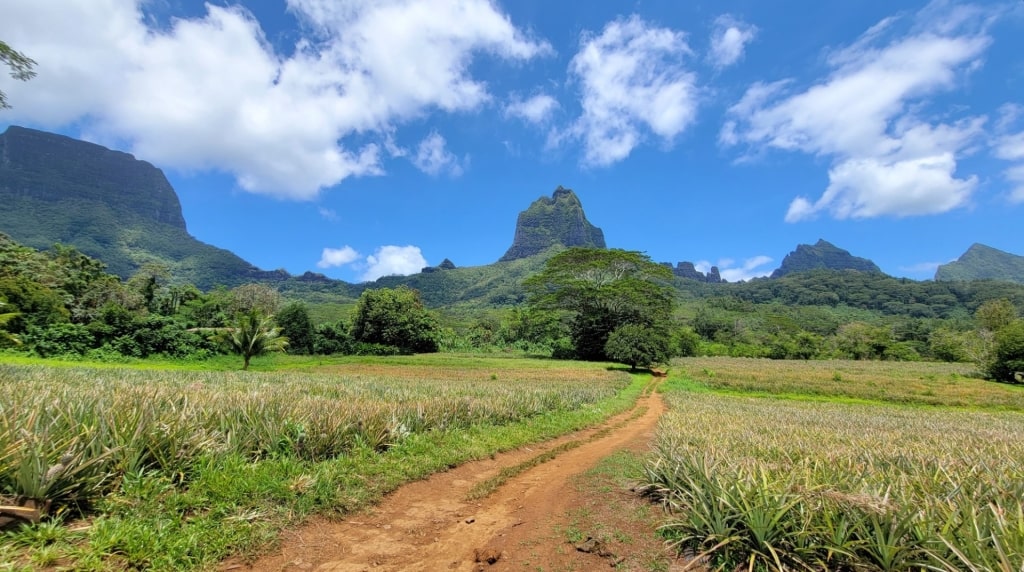
Hiking in Moorea
High season throughout the centrally located islands equates to the Northern Hemisphere’s summer: June to August. Humidity is bearable and there are long, sunny days with clear skies. The islands are at their busiest now, with clear waters and calm seas, perfect for watersports. The lower humidity makes this a great season for hiking and sightseeing, too.
When Is Shoulder Season?
Shoulder season in much of French Polynesia, particularly the Society Islands, is when the dry season transitions into the rainy season and vice versa. In much of the archipelago, this is the months of April, May, September, and October.
Any of these months is a good time to visit, provided you are comfortable with a little more humidity. There are fewer crowds in April and October, too, in as much as these islands ever feel crowded.
When Is Low Season?
Low season in the islands is generally the winter months of the Northern Hemisphere, from November to March. Not that there is anything wintery during this time; in contrast, this is the hottest, most humid time of the year, with frequent and intense downpours to clear the air.
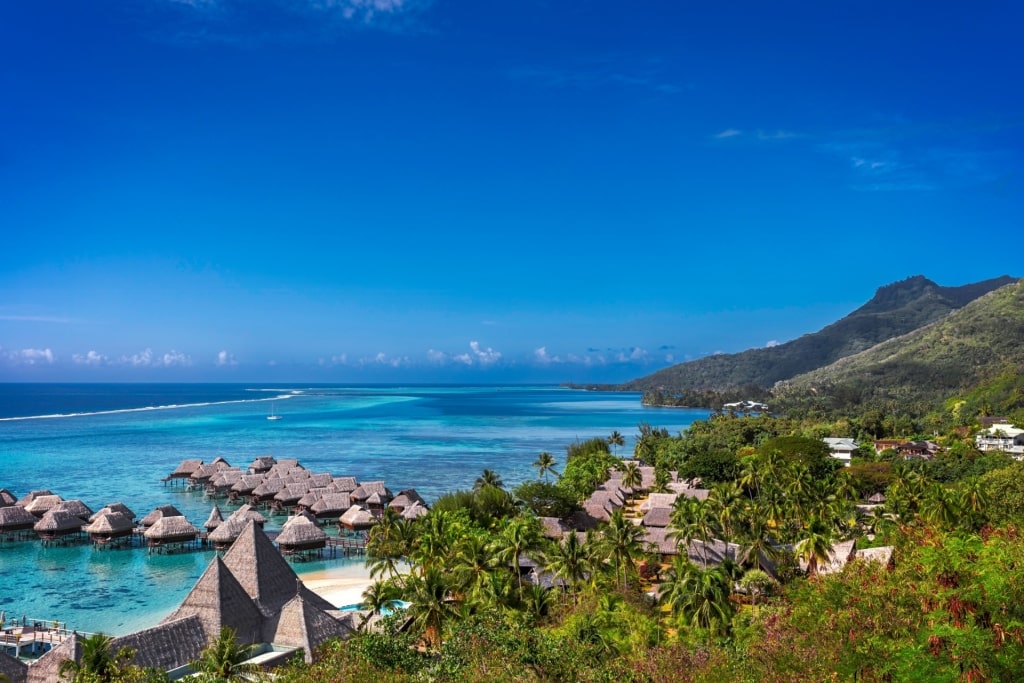
Moorea
Explore the tropical beauty of the South Pacific on one of Celebrity’s cruises to French Polynesia.
